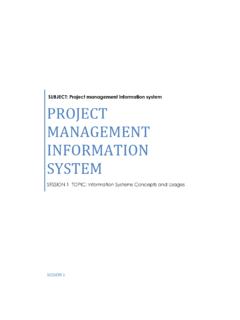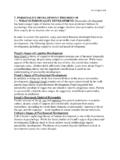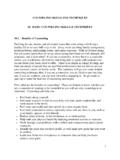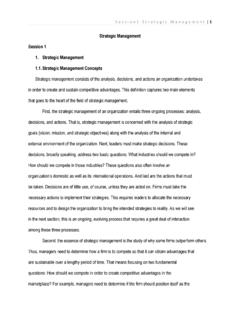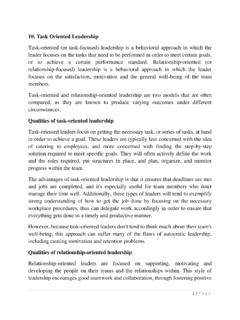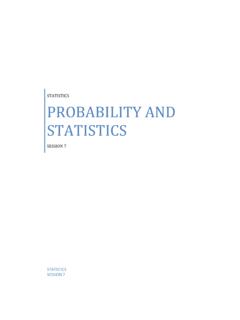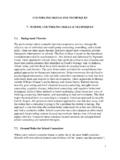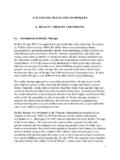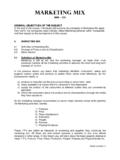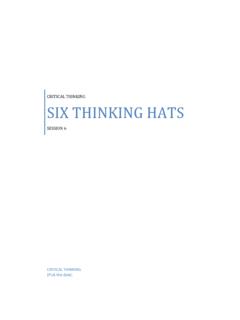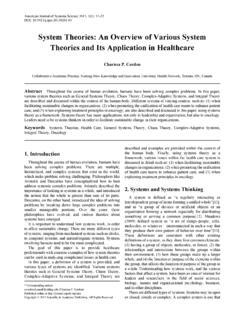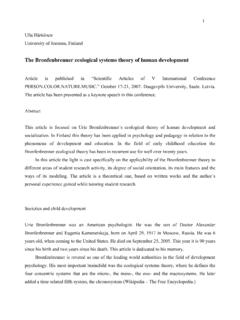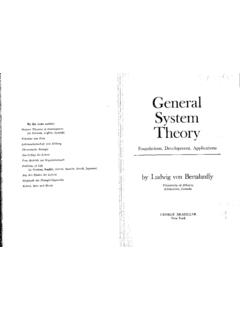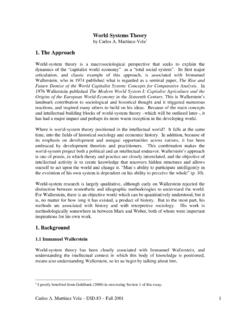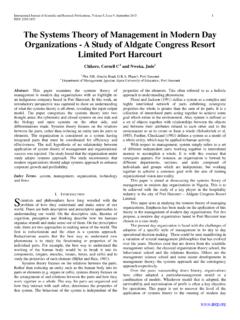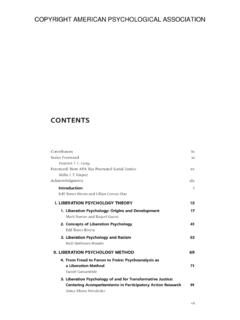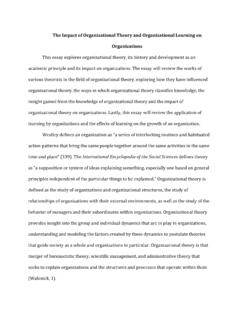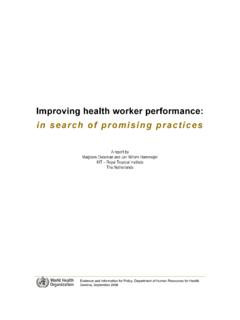Transcription of FUNDAMENTALS OF FAMILY THEORY 3. THE EIGHT …
1 1 FUNDAMENTALS OF FAMILY THEORY 3. THE EIGHT INTERLOCKING CONCEPTS Bowen FAMILY Systems THEORY Bowen FAMILY Systems THEORY , also known as Bowen Natural Systems THEORY , describes the natural emotional processes which shape how families and other social groups function. Dr. Bowen built his THEORY after studying the human FAMILY as a living, natural system . He strived for consistency between the THEORY 's concepts and knowledge from the rest of the life sciences. Before outlining the EIGHT concepts of the THEORY , it is important to understand four background concepts and assumptions: Chronic Anxiety, Basic Life Forces, Emotional Process, and the FAMILY as an Emotional Unit.
2 Chronic Anxiety While specific events or issues are often the principal generators of acute anxiety, the principal generators of chronic anxiety are people's reactions to a disturbance in the balance of a relationship system . Anxiety is an organism's response to a real or imagined threat. Dr. Bowen presumed that all living things experience anxiety in some form. He used the term interchangeably with emotional reactivity. Both terms indicate an increase in physical manifestations, such as heart rate and blood pressure changes, gaze aversion, fight or flight responses, and heightened alertness or fear sensations.
3 Though a certain level of anxiety may mobilize necessary responses for human survival, some reactions to threat may not be adaptive. Chronic anxiety differs from acute anxiety. Acute anxiety is usually a response to a real threat and is of short duration. Chronic anxiety is ordinarily a response to an imagined threat and has a more enduring quality. Various life events may disturb the balance in a FAMILY system , but once it is disturbed, FAMILY members may react more to the disturbance in the relationship system than to the events themselves.
4 Chronic anxiety often exceeds a person's or FAMILY 's ability to cope with it. 2 Basic Life Forces The THEORY postulates two opposing basic life forces. One is a built-in life growth force toward individuality and the differentiation of a separate self, and the other an equally intense emotional closeness. Bowen defined two life forces at work in human relationship systems, togetherness and individuality. The togetherness force entails the pressure and desire to be like others, to agree on beliefs, principles, values, and feelings.
5 The individuality force, also termed the differentiating force, involves the impetus to define a separate self from others. Bowen viewed the differentiating force as responsible for self without making demands on others or blaming others. A person defining self to an emotional system takes action based on well thought out principles. According to Bowen, the togetherness force assumes responsibility for the happiness, comfort, and well-being of others while a person differentiating a self assumes responsibility for one's own happiness and comfort and well-being.
6 Emotional system The emotional system is composed of genes, mitochondria, cell membranes, intercellular connections, extracelluar fluids, organs, tissues, physiological systems, and all the emotional reactions supported by these components. While Darwin theorized a physical link between the human and other life forms, Bowen theorized an emotional link between the two. The human, by virtue of possessing an emotional system akin to what exists in all life, has major portions of his behavior governed by processes that predate the development of his complex cerebral cortex.
7 The emotional system in the context of Bowen THEORY includes instinctual drives, reproduction, and responses controlled by the autonomic nervous system . Bowen distinguished between emotions and feelings. This made it possible to apply the term emotional to all living things. Feelings can be felt while emotions operate outside of awareness. Feelings like joy, despair, anger, or guilt, may be a surface awareness of emotions. The intellectual system separates humans from other animals. Bowen made a distinction between thinking that is overly influenced by the feeling and emotional system , and thinking that is independent of it.
8 A person who distorts reality fuses thinking with feeling and emotional states. On the other hand, objective thinking is more independent of the emotional and feeling systems. 3 The FAMILY as an Emotional Unit The emotional functioning of individual members was so interdependent that the FAMILY could be more accurately conceptualized as an emotional unit. Bowen's view of the FAMILY as an emotional unit represents a significant paradigm shift. The concept of the FAMILY as an emotional unit implies a deep, multi-generational connection between FAMILY members that significantly influences the behaviors of its members outside of their conscious awareness.
9 It conceptualizes the FAMILY as one organism. Pathology in an individual member of the FAMILY is seen as a symptom of imbalance in the FAMILY emotional system . Individuals may be more vulnerable to developing symptoms in the context of an emotional system that is out of balance. Symptoms can fall into three categories: physical, emotional, and social dysfunction. For example, developing cancer, getting depressed, or committing a crime, would each be conceptualized as symptoms of emotional process in the FAMILY . This does not mean that families cause symptoms, only that they can get caught in unconscious ways of regulating anxiety that can have unanticipated consequences.
10 This way of thinking about symptoms reduces the stigma associated with certain human problems and increases objectivity for creatively addressing them. The 8 Interlocking Concepts The EIGHT interlocking concepts of Bowen THEORY include: 1) Differentiation of Self 2) Triangles 3) Nuclear FAMILY Emotional Process 4) FAMILY Projection Process 5) Cutoff 6) Multigenerational Transmission Process 7) Sibling Position 8) Societal Emotional Process Differentiation of Self Depicted with a theoretical scale, differentiation of self describes how people cope with life's demands and pursue their goals on a continuum from most adaptive to 4 least.
